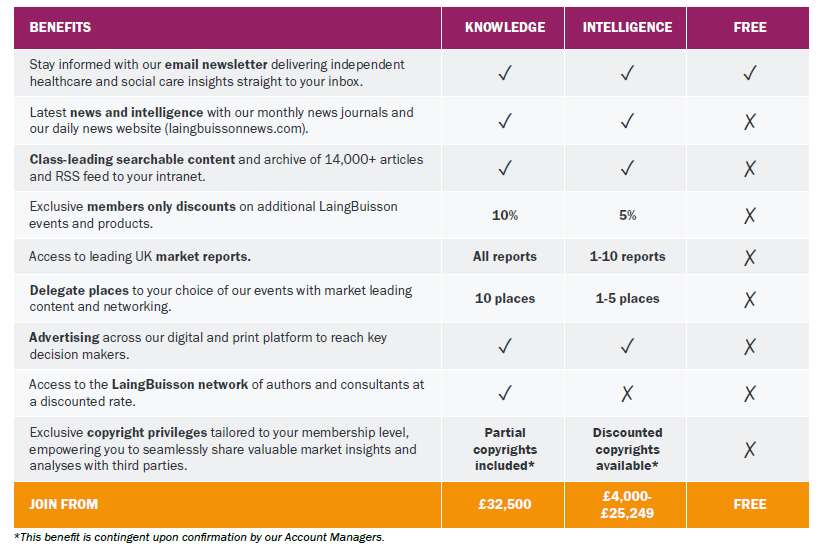NHS spending on agency staff continues to skyrocket – driving the temporary healthcare staffing market to more than £5 billion in value
LaingBuisson have published the 1st edition of their Temporary Recruitment and Staffing: Healthcare UK Market Landscape Report
- Overall market value for the healthcare temporary recruitment and staffing market is estimated at £5.1 billion in the UK.
- The NHS is by far the largest element of the market – spending an estimated £4.6 billion in 2022/23 and increasing the amount spend on agency staff by 18.7% on 2021/22 levels. The remainder of the market is expenditure on temporary staff by independent hospitals and on GP locums.
- A further £5.8 billion was spent by the NHS in England on temporary bank staff – meaning that the NHS spent over £10 billion in total on non-permanent staffing in 2022/23.
- Spending on temporary agency staff fell significantly after 2015/16 following the introduction of the Agency Rules framework and close monitoring of spending by NHS Trusts in England. However, reported spend skyrocketed in 2021/22 and 2022/23, suggesting NHS England either lost, or deliberately loosened, its grip on NHS Trusts as waiting lists ballooned in size as a result of the pandemic.
High levels of healthcare demand since the Covid-19 pandemic and chronic workforce shortages are likely to have driven this increase in expenditure. The NHS Long-Term Workforce Plan provides some hope for managing future pressures, but provides little
NHS spending on temporary staff from recruitment agencies has skyrocketed over the last two years. This follows several years where the introduction of price-cap regulations and close monitoring of NHS Trusts seemed to have brought rising agency spend under control, according to research published today by LaingBuisson.
LaingBuisson’s Temporary Recruitment and Staffing: Healthcare UK Market Landscape Report values the total UK market at £5.1 billion in 2022/23. The NHS is by far the largest purchaser of agency healthcare staff – accounting for £4.6 billion of spend.
As the largest market, NHS England makes up the bulk of this spend, but over the last five years spend in Scotland, Wales and Northern Ireland have been rising far more quickly – all three devolved nations experiencing a double digit CAGR over the last five years. Overall spend on agency staff by the NHS in the UK has seen 11.8% CAGR over the last five years.
The NHS in England has been attempting to bring its spend on agency staff under control – and appeared to have done so by putting in place Agency Rules in 2015/16, which embedded price caps, close central monitoring and a wider policy push to develop ‘bank’ staff. Bank staff are effectively an alternative non-permanent staffing solution – staff that can be drawn down and paid at a level equivalent to the existing workforce – saving the NHS money by not having to pay premium prices to recruitment agencies.
Spend on bank staff has increased from £3.55 billion to £5.80 billion between 2018/19 and 2022/23. As of 2021/22, this had grown to represent a £1.45 billion market for private sector organisations offering bank solutions. This is in addition to the expenditure on recruitment agency healthcare staff.
The publication of the NHS Long-Term Workforce Plan provides some hope that in the longer-term, the NHS will begin to manage the supply-side issues that are causing chronic workforce shortages. However, given the length of time it takes to train new medical professionals, there may be only marginal gains in the short-term.
Report author, Tim Read said:
“LaingBuisson’s analysis suggests that spending on temporary agency staff is skyrocketing. Whether the NHS has lost its grip on fiscal control, or whether it has quietly signalled to local hospitals to spend what they need to ensure safe staffing during the pandemic and to begin to bring down the elective waiting list, the end result is the same – the amount of money spent on agency staff through recruitment agencies has grown massively in the last two years.
When you take into account the amount of money that is also spent on bank staff, this takes NHS spending on non-permanent staff to more than £10 billion in 2022/23.
The NHS is facing unprecedented challenges and it is unlikely that the public would welcome tightening up agency spending if it meant accessing services became even more of a struggle. With the NHS being told that it needs to live within its mean, politicians should not shy away from what it is costing to deliver the services that people receive.
Bringing down spend on agency workers, and achieving the ambitions of the Long-Term Workforce Plan will require significant political will. Every politician will have the length of the NHS waiting list looming in the back of their mind, and spending money to bring it down quickly may lead to sacrificing long-term ambitions for short-term success. Resolving the workforce challenge will take commitment across several election cycles and for politicians to recognise that personal ambition may need to be set aside to achieve an essential public good.”







